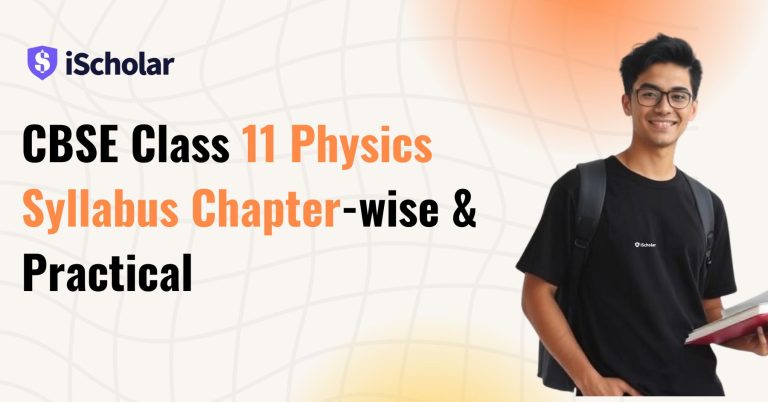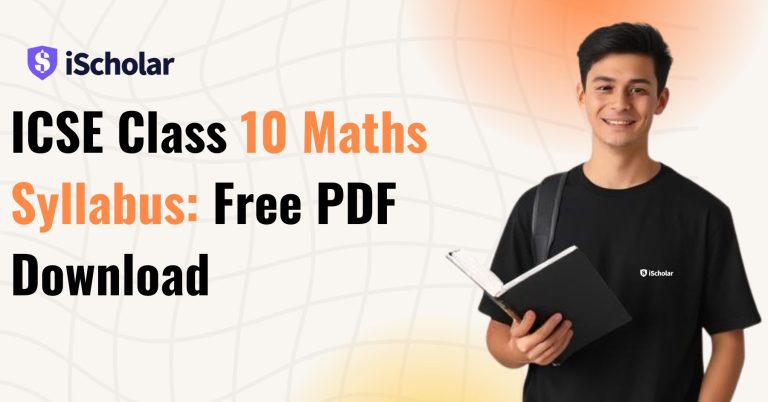The National Eligibility cum Entrance Test (NEET) is a highly competitive examination conducted in India for students aspiring to pursue medical and dental courses at the undergraduate level. NEET is considered one of the toughest entrance exams, and securing a good rank is crucial for admission to prestigious medical institutions. Among the various subjects tested in NEET, Physics holds significant importance and requires a thorough understanding of concepts, problem-solving skills, and application of theoretical knowledge.
Understanding NEET and Its Importance:
NEET serves as the gateway to numerous medical and dental colleges across India. It is conducted by the National Testing Agency (NTA) and evaluates students’ knowledge in Physics, Chemistry, and Biology. As Physics forms a crucial part of NEET, the NTA regularly updates the Physics syllabus to keep it aligned with the evolving curriculum and industry demands.
NEET Physics Syllabus 2024
| Class XI | Class XII |
| Physical world and measurement | Electrostatics |
| Kinematics | Current Electricity |
| Laws of Motion | Magnetic Effects of Current and Magnetism |
| Work, Energy and Power | Electromagnetic Induction and Alternating Currents |
| Motion of System of Particles and Rigid Body | Electromagnetic Waves |
| Gravitation | Optics |
| Properties of Bulk Matter | Dual Nature of Matter and Radiation |
| Thermodynamics, Oscillations and Waves | Atoms and Nuclei |
| Behaviour of Perfect Gas and Kinetic Theory | Electronic Devices |
Physics NEET Syllabus 2024
Mechanics:
The branch of Physics that deals with motion, forces, and energy. Mechanics, a crucial topic in the NEET (National Eligibility cum Entrance Test) syllabus, unravels the fundamental principles governing motion and forces in the physical world. The study of work, energy, and power enables NEET aspirants to understand the transfer and transformation of energy in various physical processes.
Additionally, mechanics encompasses rotational motion, torque, and angular momentum, providing insights into the behavior of objects in rotational equilibrium.
Laws of Motion:
The Laws of Motion, a fundamental topic in the NEET (National Eligibility cum Entrance Test) syllabus, provide the cornerstone for understanding the principles that govern the motion of objects in the physical world. NEET aspirants encounter three key laws: Newton’s First Law of Motion, which states that an object at rest will remain at rest, and an object in motion will continue moving with a constant velocity unless acted upon by an external force. Newton’s Second Law of Motion, expressed as F=ma, relates force (F) to the mass (m) and acceleration (a) of an object, highlighting the direct relationship between force and the rate of change of an object’s motion. Lastly, Newton’s Third Law of Motion states that for every action, there is an equal and opposite reaction.
Understanding these laws is essential for NEET aspirants as they form the basis for analyzing and predicting the behavior of objects subjected to forces. By mastering the Laws of Motion, NEET aspirants can effectively apply these principles to solve physics problems, develop a deeper comprehension of motion and forces, and enhance their performance in the NEET exam.
Work, Energy, and Power:
Work, Energy, and Power, crucial concepts in the NEET (National Eligibility cum Entrance Test) syllabus, delve into the relationships between forces, motion, and the transfer of energy in the physical world. NEET aspirants encounter work, which is defined as the product of force and displacement in the direction of the force. The concept of energy is essential, with two key forms: kinetic energy, associated with the motion of an object, and potential energy, related to the position or configuration of the object in a force field.
The principle of conservation of energy, stating that energy cannot be created or destroyed, but only converted from one form to another, plays a significant role in various physical processes. Moreover, the study of power, the rate at which work is done or energy is transferred, enables NEET aspirants to understand the efficiency and performance of various systems.
Electromagnetism:
Electromagnetism, a crucial topic in the NEET (National Eligibility cum Entrance Test) syllabus, unravels the fascinating relationship between electricity and magnetism in the physical world. The study of electric circuits and Ohm’s law is vital in understanding the flow of current and the behavior of resistors in circuits. Additionally, the concept of magnetism involves magnetic fields, magnetic forces, and the behavior of magnetic materials. The interplay between electric currents and magnetic fields leads to electromagnetic induction, a fundamental phenomenon in generators and transformers.
Maxwell’s equations summarize the fundamental laws of electromagnetism, providing a comprehensive framework to analyze and understand various electromagnetic phenomena.
Electrostatics:
Electrostatics, a fundamental topic in the NEET (National Eligibility cum Entrance Test) syllabus, delves into the fascinating study of stationary electric charges and their interactions in the physical world. Coulomb’s law is a fundamental principle in electrostatics, describing the force between two charged particles, with the force being directly proportional to the product of the charges and inversely proportional to the square of the distance between them. The concept of electric field plays a significant role, representing the region around a charged particle where other charges experience electric forces.
Additionally, the study of electric potential and potential difference is crucial in understanding the energy associated with charges in an electric field. The principles of electrostatic induction and electric dipoles further enrich the understanding of electric phenomena.
Electromagnetic Induction:
Electromagnetic Induction, a crucial topic in the NEET (National Eligibility cum Entrance Test) syllabus, unravels the intriguing relationship between changing magnetic fields and induced electric currents in the physical world. Lenz’s law complements Faraday’s law, stating that the induced current opposes the change in magnetic flux that causes it. The concept of mutual induction, involving the interaction of two or more coils, is vital in transformers, while self-induction plays a role in inductors and solenoids.
The study of induced currents in conducting loops is essential in understanding generators and alternators, which convert mechanical energy into electrical energy.
Optics:
Optics, a significant topic in the NEET (National Eligibility cum Entrance Test) syllabus, explores the fascinating behavior of light and its interactions with matter. Reflection involves the bouncing back of light rays from a surface, forming images in mirrors. Refraction, on the other hand, refers to the bending of light as it passes through different mediums, leading to phenomena like lenses and prisms. The study of dispersion reveals the separation of light into its component colors, as seen in rainbows and prisms.
Additionally, the concepts of interference and diffraction provide insights into the patterns formed by the interaction of light waves. Understanding these principles is vital in comprehending the working of optical instruments like microscopes and telescopes.
Ray Optics:
Ray Optics, a significant topic in the NEET (National Eligibility cum Entrance Test) syllabus, delves into the study of light as it travels in straight lines and interacts with different optical elements. Refraction plays a vital role, involving the bending of light as it passes through different mediums, governed by Snell’s law.
The concepts of convex and concave lenses and mirrors are crucial in understanding image formation and magnification. Additionally, the study of critical angle and total internal reflection is fundamental in fiber optics and prism applications.
Wave Optics:
Wave Optics, a significant topic in the NEET (National Eligibility cum Entrance Test) syllabus, explores the behavior of light as a wave phenomenon. Diffraction plays a crucial role, involving the bending of light waves around obstacles, leading to the spreading of light and the formation of diffraction patterns. The concept of polarization is vital in understanding the alignment of light waves along a specific direction. Moreover, the study of Huygens’ principle helps in understanding the propagation of light as a series of secondary wavelets.
Modern Physics:
Modern Physics, a crucial topic in the NEET (National Eligibility cum Entrance Test) syllabus, delves into the revolutionary discoveries and theories that transformed our understanding of the universe at the beginning of the 20th century and beyond. The study of special relativity, proposed by Albert Einstein, involves the behavior of objects moving at high speeds, leading to fascinating phenomena like time dilation and length contraction. General relativity extends this understanding to the gravitational interactions between massive objects, providing a new perspective on the nature of space and time. Additionally, the concept of nuclear physics deals with the structure and properties of atomic nuclei and the processes of nuclear reactions..
Dual Nature of Matter and Radiation:
The Dual Nature of Matter and Radiation, a significant topic in the NEET (National Eligibility cum Entrance Test) syllabus, unveils the intriguing duality of particles and waves in the microscopic world. The study of photoelectric effect, proposed by Albert Einstein, reveals that light behaves as discrete packets of energy (photons), with the ability to eject electrons from a metal surface. Complementing this, the concept of de Broglie wavelength associates a wavelength with particles like electrons, linking their momentum with their wave-like nature. Understanding these principles is vital in comprehending the behavior of matter and radiation at the quantum level
Atoms and Nuclei:
Atoms and Nuclei, a significant topic in the NEET (National Eligibility cum Entrance Test) syllabus, delve into the fundamental building blocks of matter and the central region of an atom. The concept of atomic spectra reveals the unique patterns of light emitted or absorbed by atoms, providing valuable information about their composition.
Additionally, the study of radioactivity involves the spontaneous decay of unstable nuclei, leading to the emission of alpha, beta, and gamma particles. Understanding the principles of nuclear reactions is vital in comprehending processes like nuclear fission and fusion, which release tremendous amounts of energy.
Thermodynamics and Heat:
Thermodynamics and Heat, two essential topics in the NEET (National Eligibility cum Entrance Test) syllabus, delve into the study of energy transfer and transformations in physical systems. The concept of temperature is fundamental, indicating the degree of hotness or coldness of a substance. The laws of thermodynamics, including the first law (conservation of energy) and the second law (entropy and energy flow), govern the behavior of energy in various processes. Additionally, the study of specific heat capacity and latent heat helps in understanding the energy required to change the temperature or phase of a substance. Understanding the principles of thermodynamics and heat is vital in comprehending processes like heat engines and refrigerators, which involve the conversion of thermal energy into mechanical work or vice versa.
Laws of Thermodynamics:
The Laws of Thermodynamics, a crucial topic in the NEET (National Eligibility cum Entrance Test) syllabus, form the foundation for understanding energy transfer and transformations in physical systems. The concept of internal energy is fundamental, representing the total energy of a system. The second law of thermodynamics introduces the concept of entropy, indicating the direction of energy flow in processes and the tendency of systems to move towards disorder. The third law of thermodynamics deals with absolute zero temperature and the unattainability of reaching it. Understanding these principles is vital in comprehending the behavior of energy in various physical processes, from heat engines to refrigerators.
Heat Transfer:
Heat Transfer, a vital topic in the NEET (National Eligibility cum Entrance Test) syllabus, delves into the mechanisms through which thermal energy moves from one object to another. The concept of convection is fundamental, representing heat transfer through the movement of fluid particles, creating currents that distribute heat.
Additionally, the study of radiation reveals the transfer of heat through electromagnetic waves, such as the heat from the Sun reaching the Earth. Understanding these principles is vital in comprehending various real-world scenarios, from the cooling of electronic devices to the Earth’s heat balance.
Electronics and Communication:
Electronics and Communication, a crucial topic in the NEET (National Eligibility cum Entrance Test) syllabus, explores the fascinating world of electronic devices and the transmission of information through communication systems. The concept of amplifiers is fundamental, as it increases the strength of electrical signals, essential in signal processing and communication. Additionally, the study of digital electronics involves the manipulation and processing of discrete signals, forming the backbone of modern computing and communication systems. Understanding these principles is vital in comprehending the functioning of electronic circuits, ranging from audio amplifiers to digital computers and mobile communication devices
Semiconductor Devices:
Semiconductor Devices, a crucial topic in the NEET (National Eligibility cum Entrance Test) syllabus, delves into the fascinating realm of electronic components that bridge the gap between conductors and insulators. The concept of doping plays a significant role, involving the intentional addition of impurities to semiconductor materials to alter their electrical properties. N-type and P-type semiconductors are formed through this process, creating a junction called a p-n junction, crucial in diodes and transistors. The understanding of biasing in these devices allows for the control of current flow, essential in amplifiers and digital circuits.
Moreover, the study of the Field Effect Transistor (FET) reveals a fundamental device in modern electronics, used in various applications like amplifiers and switches.
Communication Systems:
Communication Systems, a crucial topic in the NEET (National Eligibility cum Entrance Test) syllabus, delves into the intricate world of transmitting and receiving information over long distances. Amplitude Modulation (AM) and Frequency Modulation (FM) are common modulation techniques used in radio broadcasting. The study of demodulation is vital in recovering the original information from the modulated signal at the receiver end. Additionally, the concept of multiplexing allows multiple signals to be transmitted simultaneously, increasing the efficiency of communication systems. The understanding of communication channels and noise plays a significant role in ensuring the reliability of information transmission.
Download NEET Physics Syllabus pdf 2024
The NEET physics syllabus for the year 2024 can be easily accessed and downloaded by aspiring candidates preparing for the National Eligibility cum Entrance Test. This syllabus outlines the topics and sub-topics that candidates need to cover while preparing for the physics section of the exam. Download NEET Physics syllabus 2024 pdf, aspirants can ensure they are well-equipped to tackle the physics portion of the NEET exam with confidence and clarity.
Conclusion
In conclusion, the NEET physics syllabus for the year 2024 plays a pivotal role in guiding aspiring candidates’ preparation for the National Eligibility cum Entrance Test. Adhering to the syllabus ensures a focused and targeted approach to their preparation, enabling students to develop a strong foundation in physics concepts and effectively tackle the NEET exam with confidence and competence in 2024.





